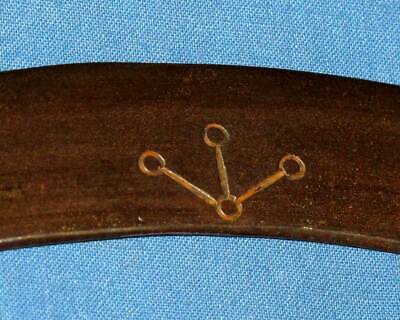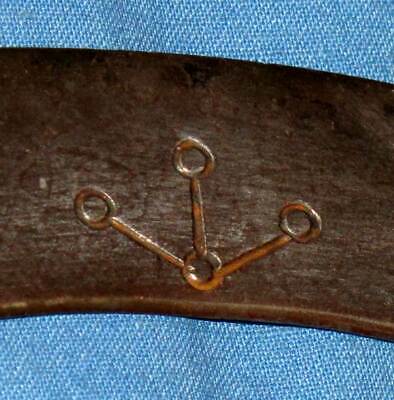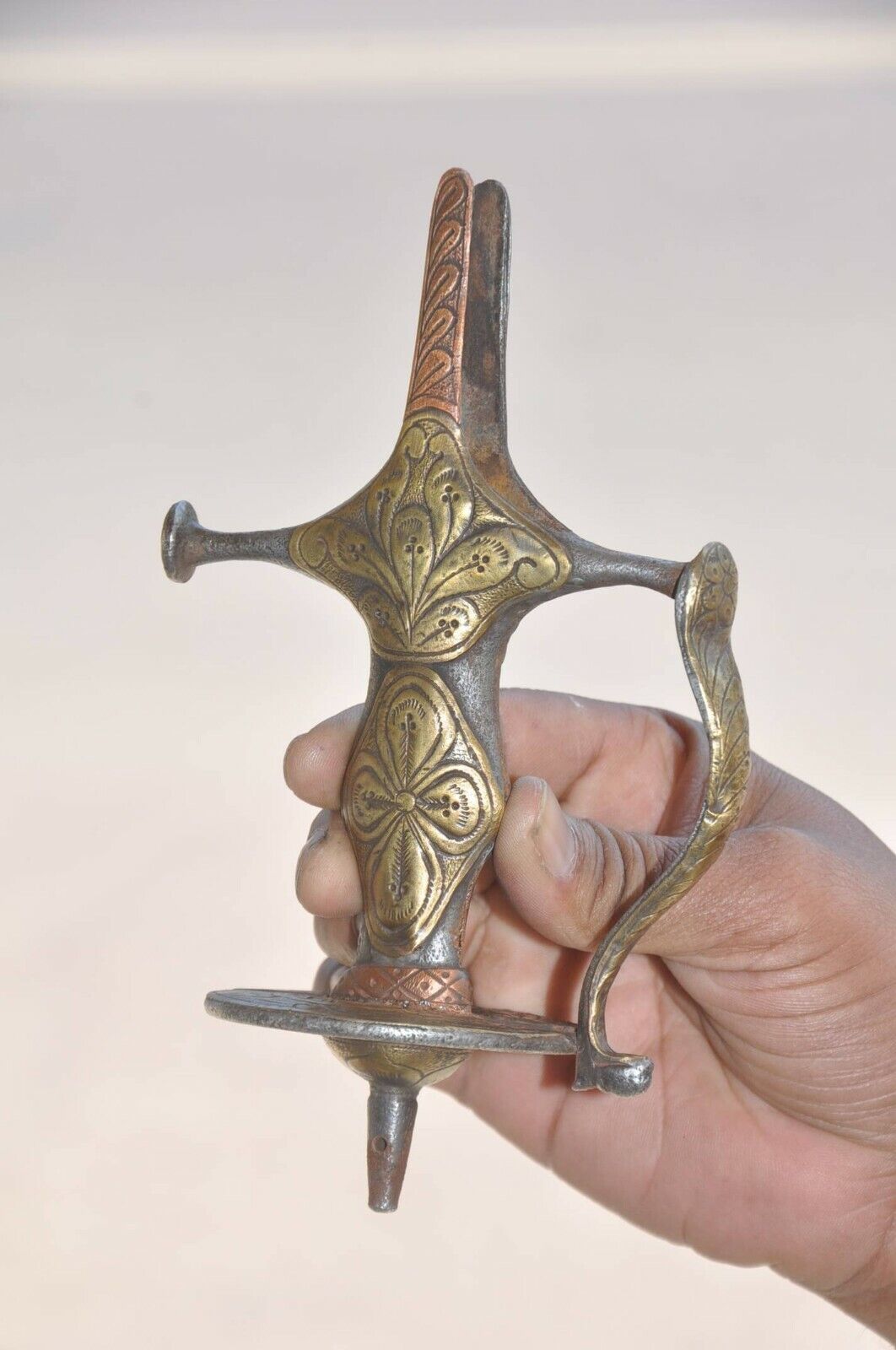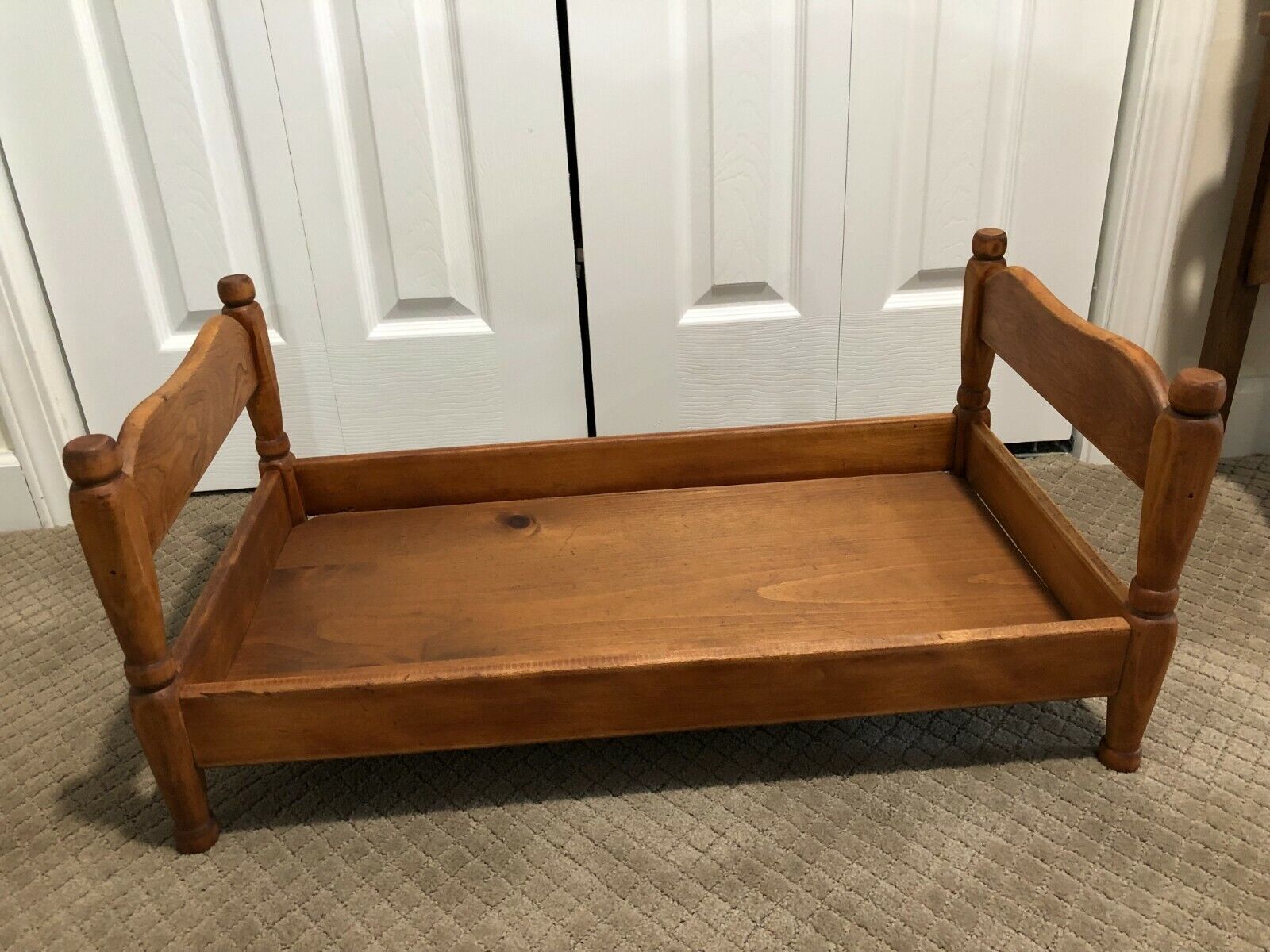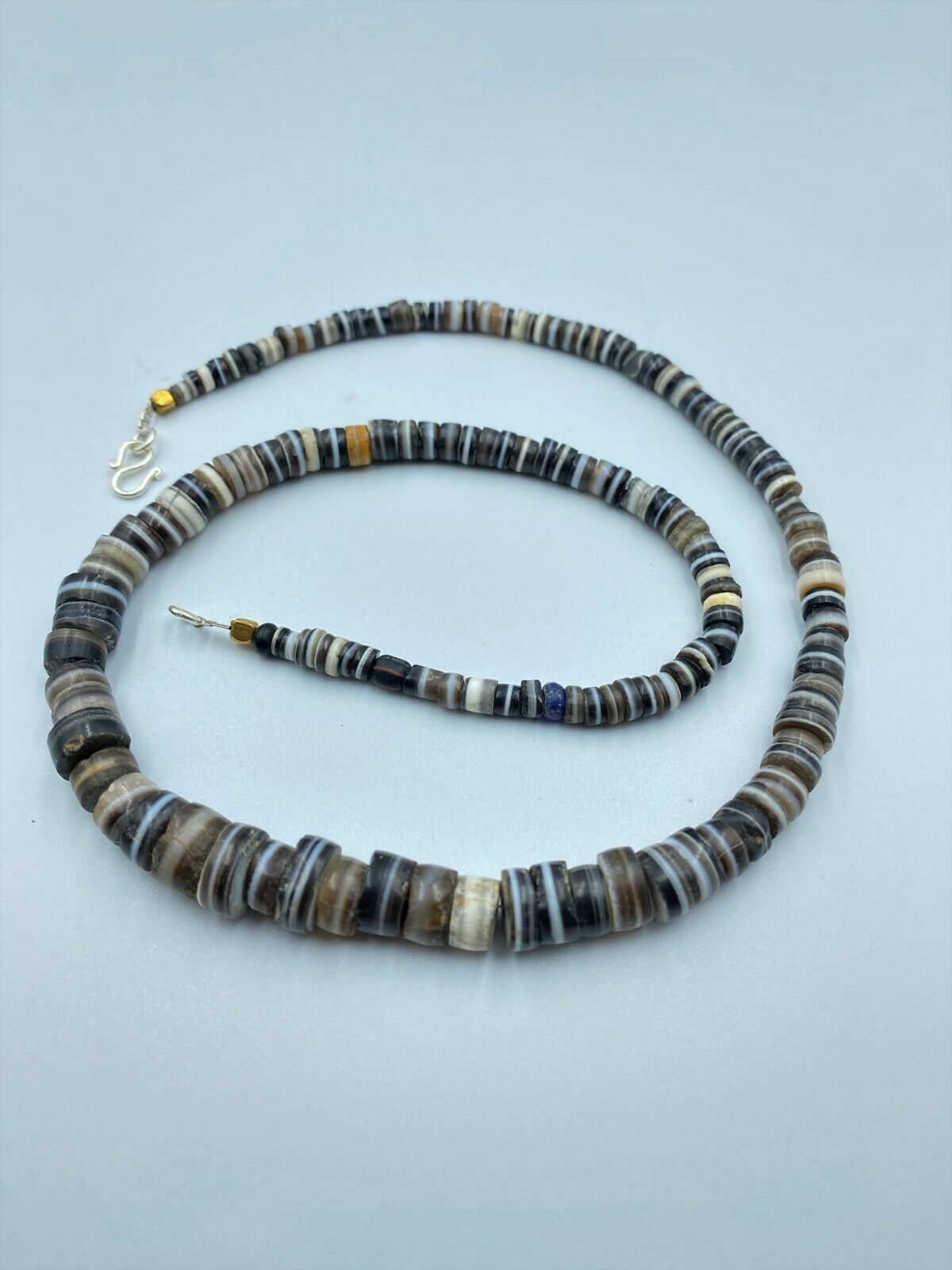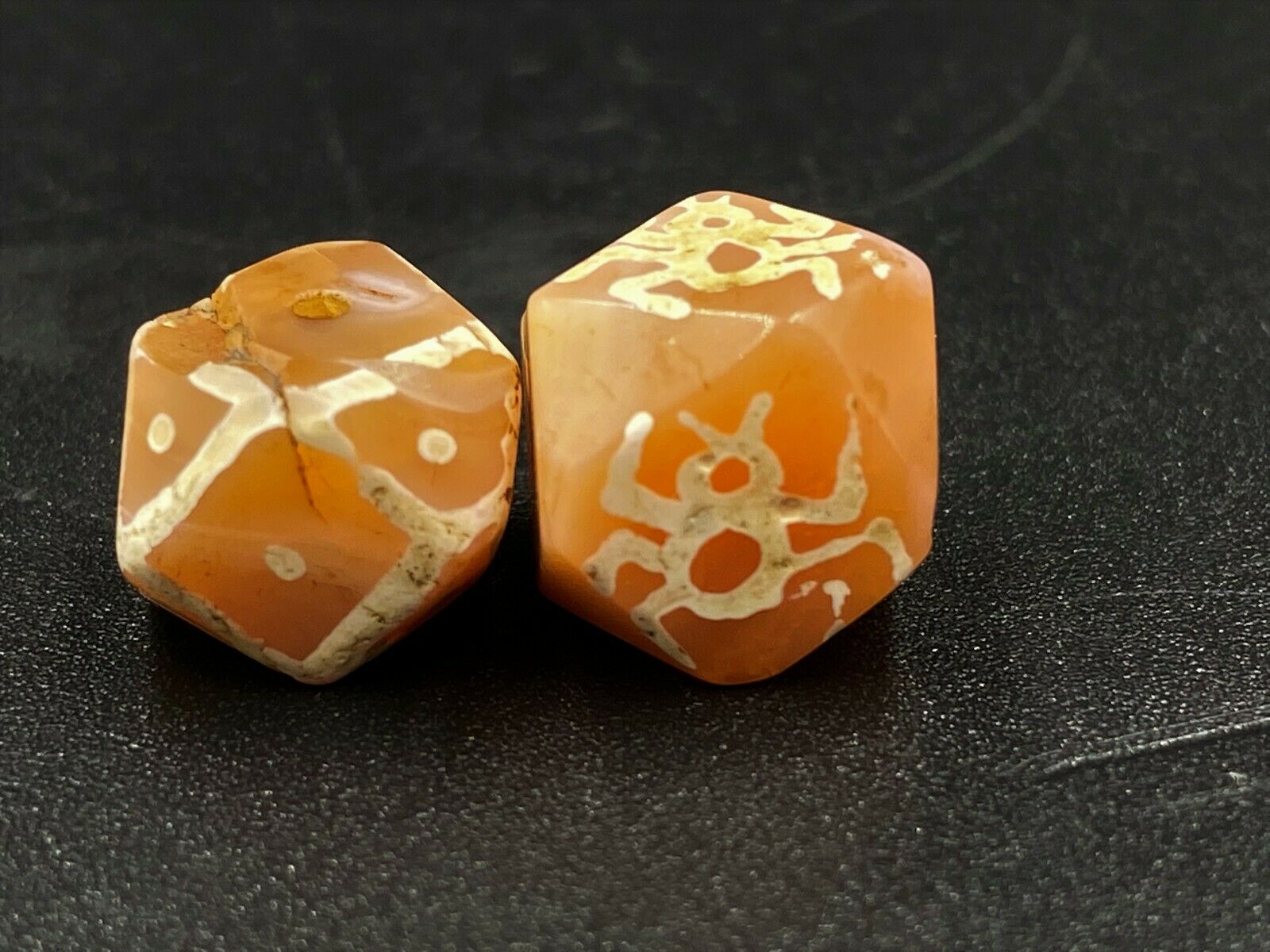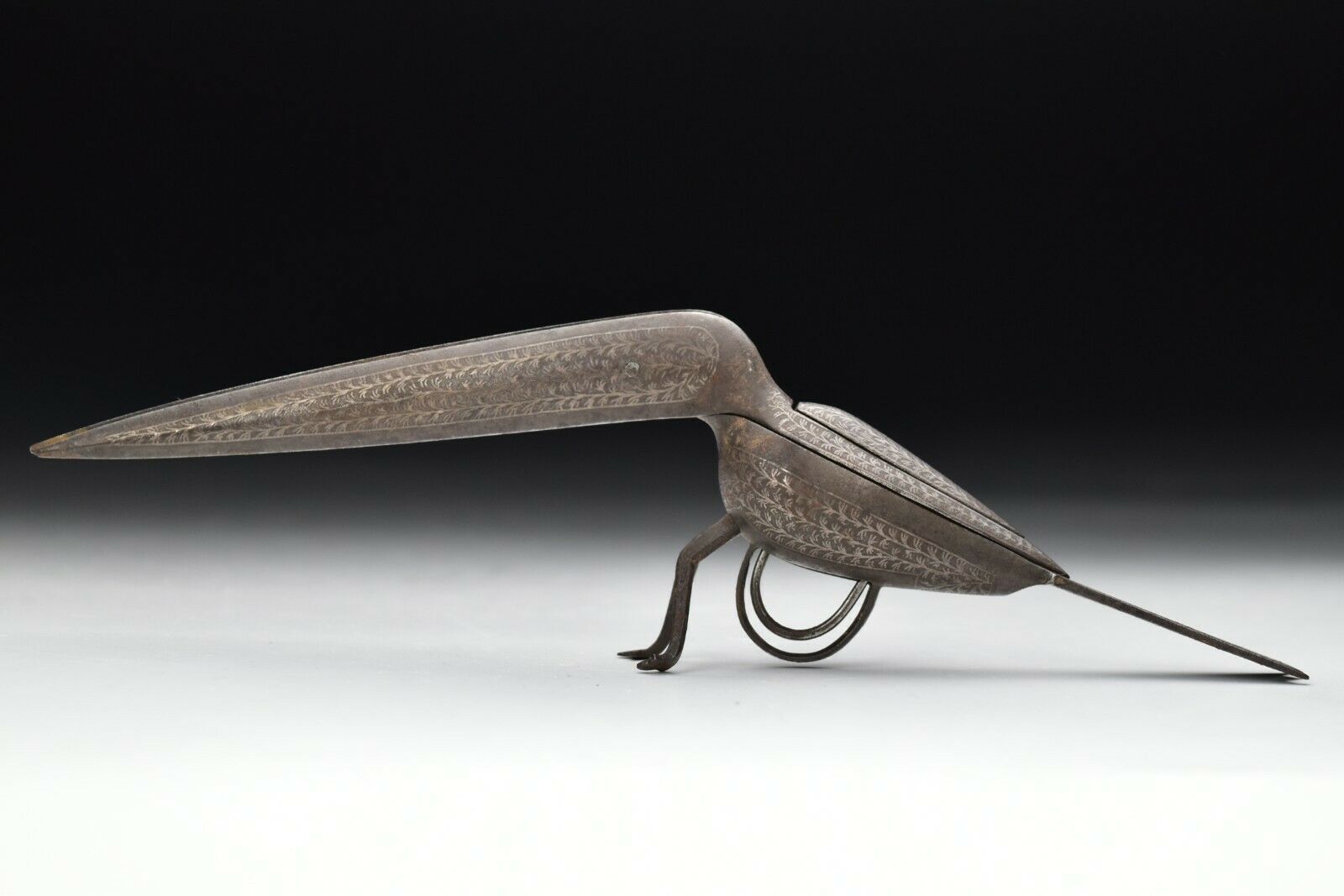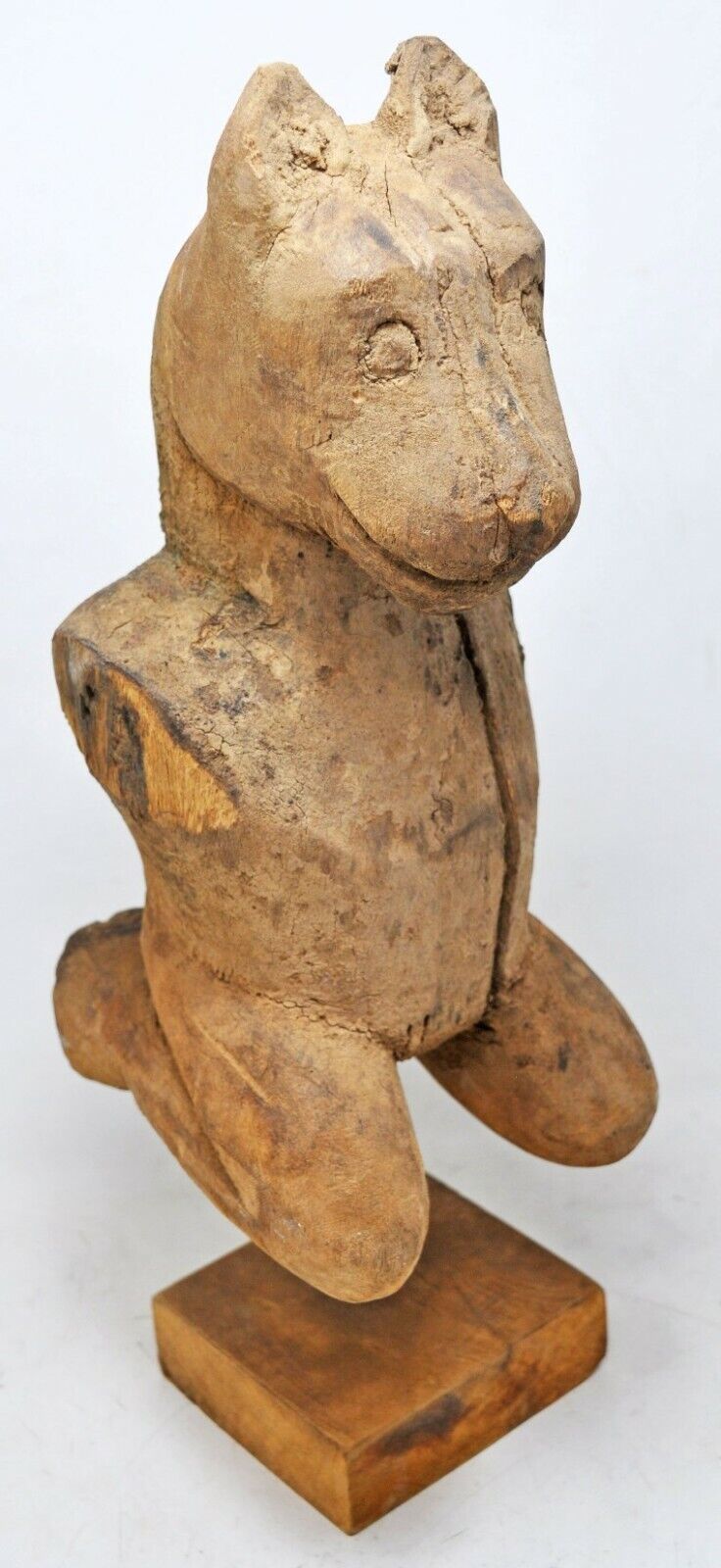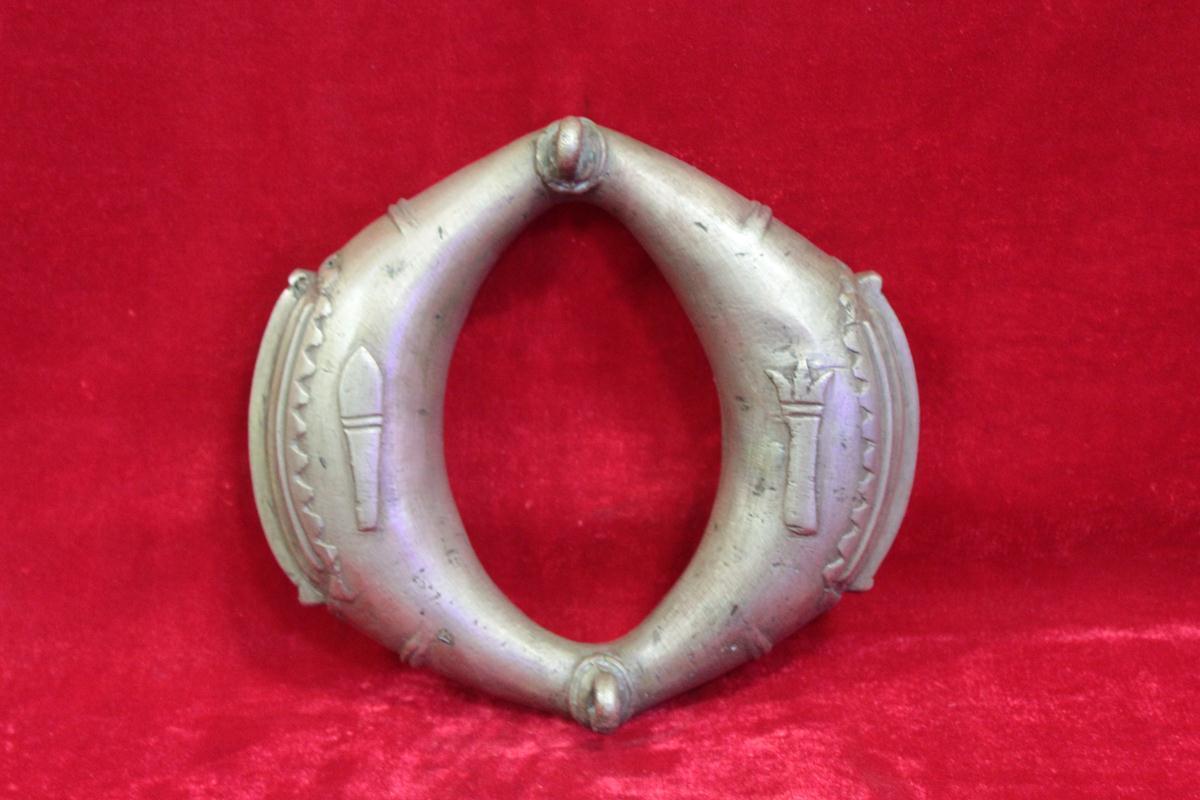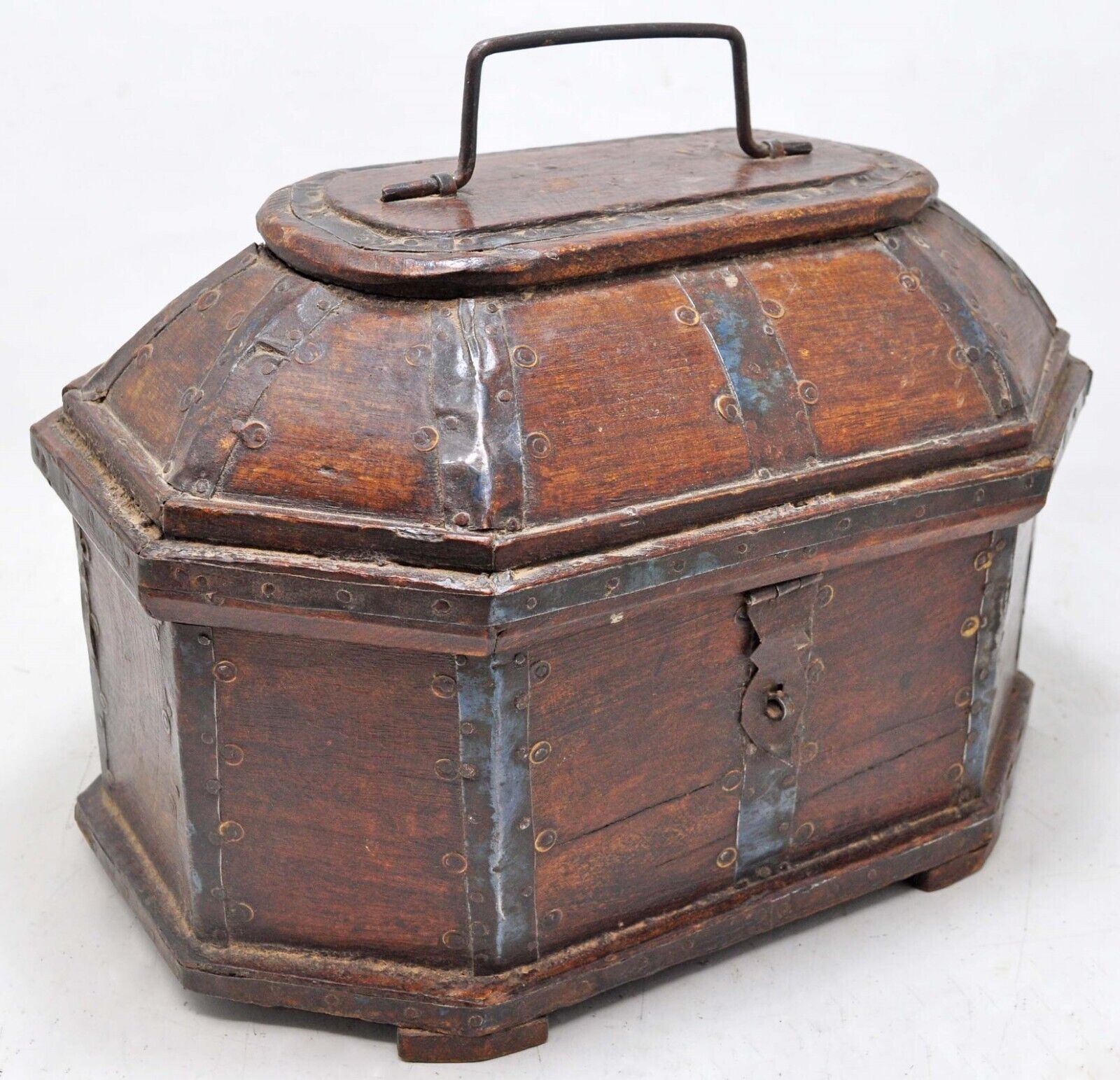-40%
Antique Sikh Chackram from India - Steel with 3 Sets of Tree Marks
$ 205.6
- Description
- Size Guide
Description
Antique Sikh Steel Chackram from IndiaThis is an old Chackram from India. It was purchased from an antiquity dealer ( Fagan Arms ) in the mid 1980s. The gallery acquired it from an auction house in England in the early 1980s. The throwing ring is made out of steel. The outer rim is machined to form a sharp cutting edge with an airfoil profile. The inner rim is blunt. There are no large pits or major damage of any kind. There are 3 manufacturer's tree marks on the upper surface. Each tree mark is identical and separated by 120 degrees. The tree marks have four small circles. Three of the circles have straight lines connecting them to the small circle and the extreme inner edge.
Outer Diameter = 26.7 cm ; Inner Diameter = 23 cm ; Inner Rim Thickness = 2.7 mm ; Weight = 194 gm
The Indian throwing ring knife is variously known as the Chakram, Chakra, Chackram, Chackrum, Chakar, Chakram Quoit. Generally thought to be the exclusive provenance of the Sikhs, Egerton shows a broad bladed example of 6" diameter in his landmark 1880 study identified as Aboriginal and non-Aryan Tribes of Central Indian and the Andaman Islands. These generally are called the "Wild Tribes" and are known to have produced fine metal work in their weapons, particularly battle axes. Allowing for a broader use of the chakram, he describes the vast variation in construction and quality encountered. Furthermore, it seems quite likely that the Sikhs (founded in 1469) may have adapted the weapon from the refugees of the earlier Aryan invasion. Egerton also states that the arm that is exclusively peculiar to this sect (Sikhs) is the quoit, but he goes on to remove any doubt that it is a true weapon and used in battle.
The Sikhs became martial under Guru Govind Singh and they used the Chackram effectively against the Moghul dynasty. The Chackram has a history that is as old as Indian civilization itself. It's useage is embedded in Indian myth and legend. In the epics . . . the Mahabharata for instance . . . an asura trying to get heavenly nectar from the moon had his head chakra-ed off. Still he tries to swallow the moon and succeeds ever so often before the moon escapes through the cut neck . . . an eclipse myth. Sculptures and paintings of many gods and godesses show the chakra being twirled.


